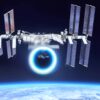Are we living in a simulation? A former NASA researcher is conducting experiments to finally answer that question.
⇧ [VIDÉO] You may also like this partner content
The concept of a universe simulated by a superior artificial intelligence has been around long before it was popularized by the hit movie series “The Matrix” in 1999. In fact, it has been decades since the scientific community, including famous physicists, addressed the question: “Are we living in a computer simulation?” After Elon Musk’s wild hypotheses and Melvin Vopson’s more solid assumptions, Thomas Campbell, a former NASA physicist, is also said to be conducting experiments aimed at determining whether there is a way to verify the simulation hypothesis. In addition, several American researchers have decided to reproduce these experiments themselves.
In 2003, Nick Bostrom, a prominent philosopher at Oxford University, suggested that it is very likely that we are living in a simulation. According to him, “an advanced civilization could reach a point where its technology is so advanced that the simulation becomes indistinguishable from reality.” He added at the time that “participants would not be aware that they are in a simulation.”
In 2016, Elon Musk proposed a similar hypothesis, which was continued by Melvin Vopson, a physicist at the University of Portsmouth, using information dynamics. This new field of research introduced by Vopson lies in the way information is stored and transformed. By applying these principles to classical physics, Vopson proposed a new law that, according to him, calls into question the foundations of our understanding of the universe. He has written a book on the subject called “Reloading Reality.”
For his part, Thomas Campbell, a former NASA physicist, is currently conducting various experiments on the simulation hypothesis, which he explained in detail in an article published in the journal International Journal of Quantum Foundations In 2017, he founded the Center for the Unification of Science and Consciousness (CUSAC), a non-profit organization that aims to fund his research efforts. Experiments should provide strong scientific evidence that we are living in a computer-simulated virtual reality. “The group announces,” he said.
Towards a New Version of Jung's Impulse Experiment
Young's slit experiment is one of the most famous and fascinating experiments in quantum physics. That's why Campbell decided to put it at the top of his list. 5 major experiencesIt was initially carried out by Thomas Young in the early 19th century to prove the wave nature of light, and it took on a new dimension with advances in quantum mechanics.
Young's apparatus is relatively simple: the source emits particles (photons or electrons) toward a barrier perforated with two parallel slits. Behind this barrier, a detector screen records the impact of the particles that have passed through the slits. When the particles are emitted without any measuring device monitoring their passage through the slits, the detector screen reveals an interference pattern. This pattern, similar to that observed with waves, indicates that each particle passes through both slits simultaneously and interferes with itself. It is this behavior that indicates the wave nature of quantum particles.
However, by introducing an observation device, this can radically change the results at the quantum level. Thus, this experiment also demonstrates the concept of quantum superposition, where particles exist in multiple states at once, until a measurement is made. This observation forces the particle to “choose” a path that breaks the superposition and eliminates the interference pattern.
Campbell imagines an alternative version of this double-slit experiment to support the idea that consciousness and information are fundamental to reality. He believes that by removing the observer, no information is actually recorded. Campbell's view is thus at odds with current concepts in quantum physics.
With this experience, he thus joined Bostrom's hypothesis, which suggests that without a “participant” (the observer in Jung's naughty experience), the universe would not exist. This proves, according to Campbell, that “the universe is exclusively participatory.” However, unlike Bostrom, Campbell asserts that “our consciousness is not the product of simulation, but is fundamental to reality.”
See also

Recently, researchers from California Polytechnic State University (CalPoly) also began conducting Campbell's first experiment.
Towards a better understanding of reality?
To illustrate his hypothesis that we live in a computer simulation, Campbell has also conducted other experiments in the past, which he describes in his book, my big toe The hypothesis that intentions interact with physical reality is one of them. This experiment aims to demonstrate the central role of consciousness in simulation.
In particular, the physicist points out that human intentions influence physical outcomes, such as the effect of positive thinking on health or the effect of consciousness on the results of random number generators. Without purpose? He showed that consciousness can interact with and influence reality. Campbell also believes that if humans are able to create complex computer simulations, this reinforces the idea that consciousness can exist in the simulation. The five experiences can challenge conventional understandings of reality and lead to the discovery of profound connections between consciousness and the universe. “,” Campbell suggests in one of his study documents.
